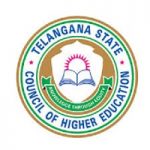 TS EAMCET 2019 Syllabus will be different as per the streams, i.e. engineering and agriculture & medical. TS EAMCET is a state level exam. It will be regulated by the Jawaharlal Nehru Technological University, Hyderabad. This exam is conducted to provide admissions in undergraduate courses of engineering & agriculture offered by different colleges or institutions in the state of Telangana. Before preparing for any exam, the first thing comes to mind is what will be the syllabus for the exam. Through this article, candidates can check the officially prescribed TS EAMCET Syllabus 2019.
TS EAMCET 2019 Syllabus will be different as per the streams, i.e. engineering and agriculture & medical. TS EAMCET is a state level exam. It will be regulated by the Jawaharlal Nehru Technological University, Hyderabad. This exam is conducted to provide admissions in undergraduate courses of engineering & agriculture offered by different colleges or institutions in the state of Telangana. Before preparing for any exam, the first thing comes to mind is what will be the syllabus for the exam. Through this article, candidates can check the officially prescribed TS EAMCET Syllabus 2019.
TS EAMCET 2019 Syllabus
TS EAMCET Syllabus consists of two parts which are engineering and agriculture & medical stream. The syllabus is designed as per the intermediate course or equivalent class standard. Board of Intermediate Education, Telangana will prescribe the complete syllabus of TS EAMCET 2019. The TS EAMCET engineering syllabus consists of Mathematics, Physics and Chemistry subjects. The TS EAMCET agriculture & medical syllabus consist of Botany, Zoology, Physics and Chemistry subjects. The detailed syllabus is mentioned below:
MATHEMATICS
Below we have given some major topics of Mathematics syllabus.
Algebra:
Theory of Equations, Matrices, Complex Numbers, Mathematical Induction, Quadratic Expressions, De Moivre’s Theorem, Permutations and Combinations, Functions, Partial fractions, Binomial Theorem.
Trigonometry:
Hyperbolic Functions, Inverse Trigonometric Functions, Trigonometric Ratios up to Transformations, Trigonometric Equations, Properties of Triangles
Vector Algebra:
Product of Vectors, Classification of vectors, Scalar multiplication, Linear combination of vectors, Addition of Vectors, Component of a vector in three dimensions, Orthogonal projections Geometrical Vector methods, Vector equations of plane in different forms.
Probability:
Random Variables and Probability Distributions, Classical definition of probability, Probability, Measures of Dispersion, Binomial and Poisson Distributions.
Geometry:
A pair of Straight Lines, The Straight Line, Locus, Circle, Plane, Hyperbola, Transformation of Axes, Ellipse, Parabola, Direction Cosines and Direction Ratios, Three-Dimensional Coordinates, System of circles
Calculus:
Limits and Continuity, Applications of Derivatives, Definite Integrals, Differentiation, Integration, Differential equations
PHYSICS
Physical World, Motion in a Straight Line, Motion in a Plane, Laws of Motion, Work, Energy and Power, Units and Measurements, Gravitation, Systems of Particles and Rotational Motion, Oscillations, Mechanical Properties of Solids, Thermal Properties of Matter, Thermodynamics, Ray Optics and Optical Instruments, Waves, Wave Optics, Electric Charges and Fields
Communication Systems, Current Electricity, Moving Charges and Magnetism, Magnetism and Matter, Mechanical Properties of Fluids, Alternating Current, Kinetic Theory, Dual nature of Radiation and Matter, Electromagnetic Waves, Atoms, Semiconductor Electronics, Nuclei, Electromagnetic Induction, Electrostatic Potential and Capacitance.
CHEMISTRY
Stoichiometry, Hydrogen and its Compounds, States of Matter: Gases and Liquids, Atomic Structure, Thermodynamics, Classification of Elements and Periodicity in Properties, Chemical Equilibrium and Acids-Bases, Chemical Bonding and Molecular Structure, The S-Block Elements, P- Block Elements group 13 (boron family), P-Block Elements group 14 (carbon family), Organic Chemistry – Some Basic Principles and Techniques, Hydrocarbons, Environmental Chemistry, Solid State, Solutions
Electrochemistry and Chemical Kinetics, Surface Chemistry, General Principles of Metallurgy, D and F Block Elements & Coordination Compounds, Chemistry in Everyday Life, Haloalkanes and Haloarenes, Polymers, Biomolecules, Organic Compounds containing C, H and O, Organic Compounds containing Nitrogen.
Also Check:
TS EAMCET 2019 Preparation Tips
BIOLOGY
This section has been divided into two parts, i.e. Botany & Zoology. The detailed syllabus is given below:
Botany:
Plant Systematics, Plant Physiology, Diversity in the Living World, Structural Organization in Plants- Morphology, Internal Organization of Plants, Cell Structure and Function, Plant Ecology, Microbiology, Genetics, Plants, Microbes and Human Welfare, Reproduction in Plants, Biotechnology, Molecular Biology.
Zoology:
Animal Diversity-II: Phylum: Chordata, Human Anatomy and Physiology-I, Structural Organization in Animals, Biology & Human Welfare, Type Study of Periplaneta Americana, Animal Diversity-I: Invertebrate Phyla, Ecology & Environment, Locomotion & Reproduction in Protozoa, Human Anatomy and Physiology-II, Applied Biology, Human Anatomy and Physiology-IV, Human Anatomy and Physiology-III,Organic Evolution, Genetics, Human Reproduction.
TS EAMCET Exam Pattern 2019
Candidates can check exam pattern details here. The TS EAMCET question paper will consist of objective type questions. The paper will comprises of total 160 questions out of which 80 questions from Mathematics, 40 questions from Physics and 40 questions from Chemistry (for Engineering). The paper will be asked in OMR Pattern. Four optional answers will be given for each question, candidates have to mark the correct one only. Use only Blue/Black Ball Point Pen to answer. There will be no negative marking for any incorrect response.
Also Check:
If you have any other queries about TS EAMCET 2019 Syllabus, you can ask us by leaving your queries below.
The post TS EAMCET 2019 Syllabus, Engineering/Medical & Agriculture Syllabus – Check Here appeared first on SarvGyan.

No comments:
Post a Comment